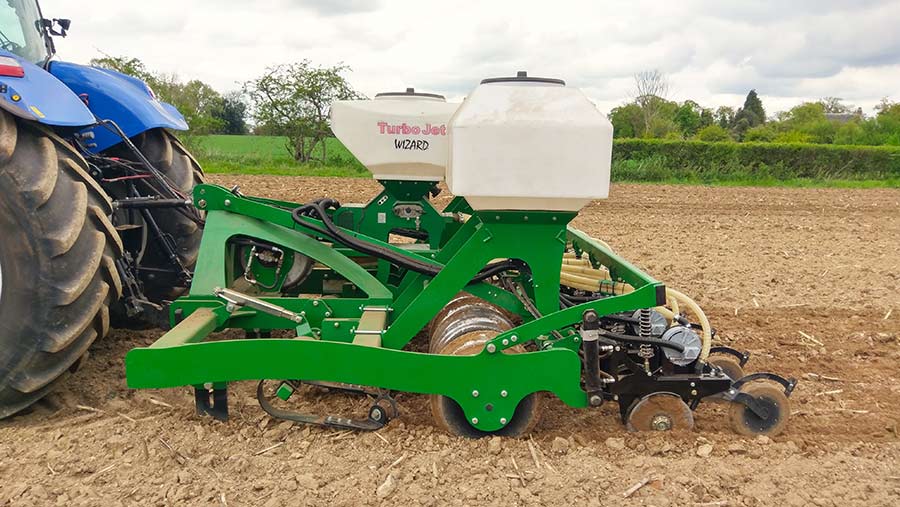Norfolk farmer Jonny Leech has used 3D printing to build a precise maize seed metering system.
This system is essential for consistent crop performance and improving his farm’s patchy forage maize yields. With the use of additive manufacturing, Leech has made significant cost savings while achieving similar performance to the ready-made machines.

Designing and driving a seed metering system
For the optimal singulation of the seeds, which is key to consistent crop performance, a maize metering uses a vacuum to suck them into recesses dotted around a rotating disc. Then, in-row spacing can be adjusted by altering the speed at which it spins. Typically, off-the-shelf versions cost $600 per row.
To create an affordable alternative, Leech designed the system using Solidworks and 3D printed the singulation system. “The most challenging part of designing the disc-based singulator was finding a way to control the vacuum so that each seed is released down the tube at a precise point,” said Leech. To solve this problem, he placed a pressure gauge on the vacuum manifold to provide the perfect pressure for pulling seeds onto the disc.
Working through fifteen prototype designs, Leech managed to build a unit that performed to 99% singulation accuracy at 12 kph. Printing the parts for all six rows took Leech three months to complete. At a cost of $70 in total, 3D printing has provided huge cost savings.
Each singulator unit was later equipped with a chain-and-sprocket drive from the rear press wheels. While the driven side uses a stainless steel sprocket, Leech 3D printed a plastic sprocket for the other end of the bicycle chain. The plastic sprockets managed the speed of 70ha without showing any signs of wear. Furthermore, 3D printing the sprocket means Leech can manufacture a stock of gear options to alter the sowing rate.
Combining 3D printed plastic parts with his own chassis and other old equipment in the farm, the entire system in the end only costed Leech $12,000.

3D printing farming equipment
3D printing is making its way into farming. Previously, additive manufacturing has enabled streamline production of automated water sensor systems for aquaculture. The technology has also helped rural farms in Myanmar to improve farming efficiency.
To reuse obsolete farming equipment, a UK-based online spare part supplier BuyAnyPart offers 3D printed part replacement service to farmers. Moving the industry forward, 3D printing has also led to new farming practices such as open source farming equipment and compact shelving units for plants.

Subscribe to the 3D Printing Industry newsletter for the latest news in additive manufacturing. You can also stay connected by following us on Twitter and liking us on Facebook.
Looking for a career in additive manufacturing? Visit 3D Printing Jobs for a selection of roles in the industry.
Featured image show’s Jonny Leech’s precise maize seed metering system. Photo via Farmer’s Weekly.



